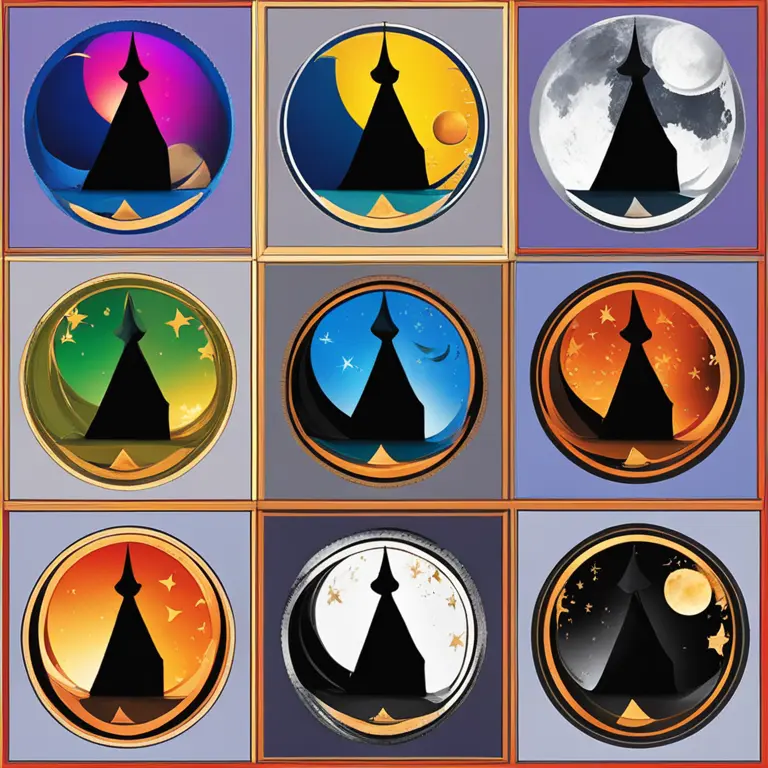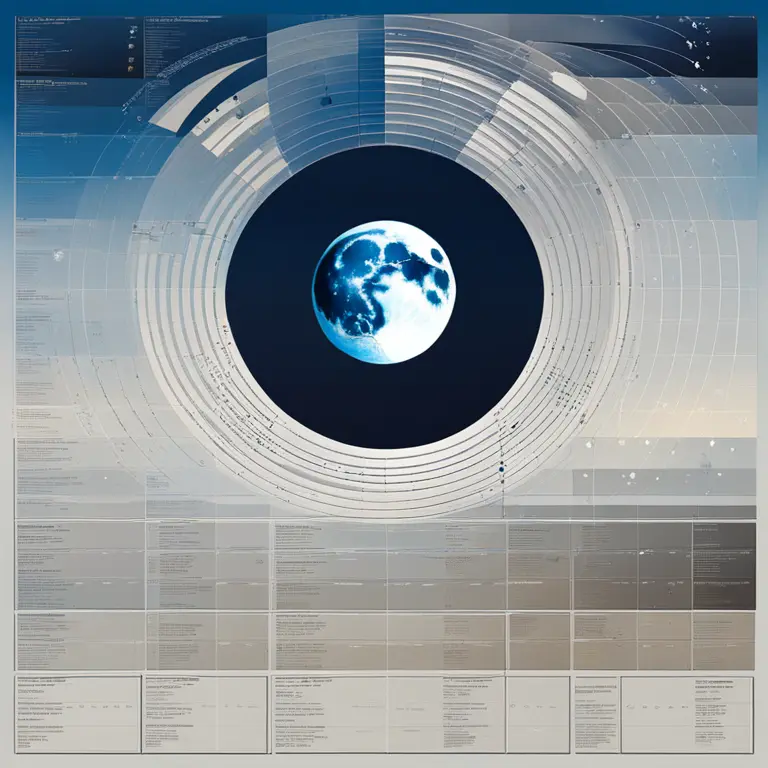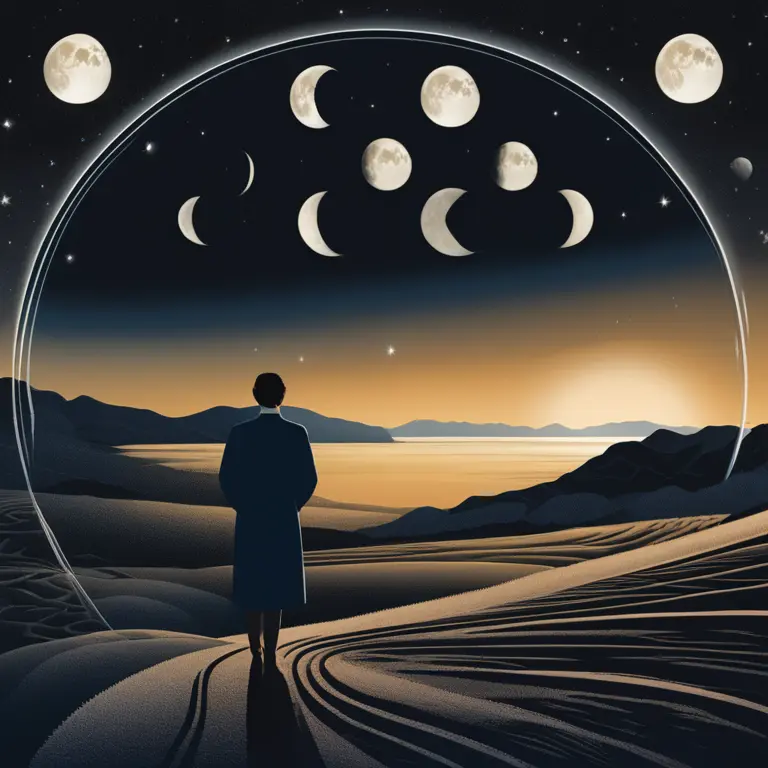
The Nighttime Moon Phase: When It’s Visible to Observers
Learn which moon phase graces the night sky and discover its unique characteristics and impact on astrology and personal biorhythms.
article by Priya Deshmukh
The Darkness of the New Moon
It is a commonly held belief that the Full Moon is the iconic nighttime companion, casting a luminous glow on the nocturnal landscape. However, one specific phase of the Moon often goes unnoticed, even though it is an exclusive feature of the night sky: the New Moon. This mysterious phase occurs when the Moon is positioned between the Earth and the Sun, rendering it invisible to us due to the lack of illumination on its surface that faces Earth. The New Moon signifies beginnings in astrological traditions, making it a potent time for setting intentions for future endeavors. During this phase, personal biorhythms may also feel reset, offering a fresh slate energetically.

Visibility Factors of the Moon
While the New Moon is enveloped in darkness, the subsequent waxing crescent slowly reveals itself night after night. Visibility of the Moon during these phases is contingent upon the interplay of celestial alignments and the observer’s geographical position. From a purely scientific perspective, the waxing crescent through to the waning crescent—encompassing the First Quarter, Full Moon, and Last Quarter—can be observed in the night sky. Each of these phases appears during specific timeframes that recur roughly every 29.5 days, known as a lunar cycle.

Impact on Astrology and Biorhythms
In astrology, each lunar phase is said to exert influence over certain aspects of our lives. For instance, as we are approaching 2024, the presence of the Full Moon in Capricorn in July could emphasize the culmination of professional projects or the profitability of investments. Biorhythms, too, are thought to sync with lunar cycles, potentially affecting one's emotional, physical, and intellectual states. Tracking these cycles may offer insights into personal wellbeing, attuning individuals with their innate rhythms and possibly leading to a harmonious balance in various aspects of life.

Mythology and Moon Phases
From ancient times, mythology has interwoven the Moon into narratives that attempt to explain its various phases and their implications. Many cultures have revered the Full Moon, while narratives around the New Moon reveal a time for introspection and rejuvenation. As we peer into the future beyond 2024, these stories continue to enchant and provide a framework for interpreting the mysterious influence the Moon exerts on personal destinies in horoscope readings and astrological forecasts.

Compatibility and Moon Phases
Astrologers often analyze compatibility between individuals by examining their Moon signs and the phase in which the Moon was present at each person's birth. The dynamic between these placements could determine relational harmony or discord. For example, a person born under a waxing crescent might be seen as growth-oriented and nurturing in relationships, aligning better with certain Moon phases than others. As astrological consultations become more nuanced, understanding the effects of the Moon phases on compatibility is a sought-after service.
Observing the Moon Phase Phenomenon
Becoming a nocturnal observer to witness the Moon's phases can be both a scientifically enriching and spiritually reflective practice. Documenting the Moon's journey each night not only connects one with the rhythm of the natural world but also serves as a meditative exercise that could complement the practice of astrology, allowing for deeper attunement with universal forces. Encouraging the observation of the Moon’s cycles and understanding their personal significance could become an integral part of holistic self-growth experiences for many.
Published: 1/19/2024
Modified: 1/19/2024
More predictions
Come back here soon to learn more about yourself and your future


The Lunar Cycle: Phases of the Moon
Delve into the celestial mechanics behind the moon's phases and how they influence the rhythm of life on Earth.


The Significance of the Moon's Phases
Discover the significance of the moon's phases in astrology and how they influence our lives.


The Lunar Cycle's Role in Our Life
Discover how the moon's phases can impact personal rhythms, horoscopes, and insights into life's mysteries in this enlightening article.